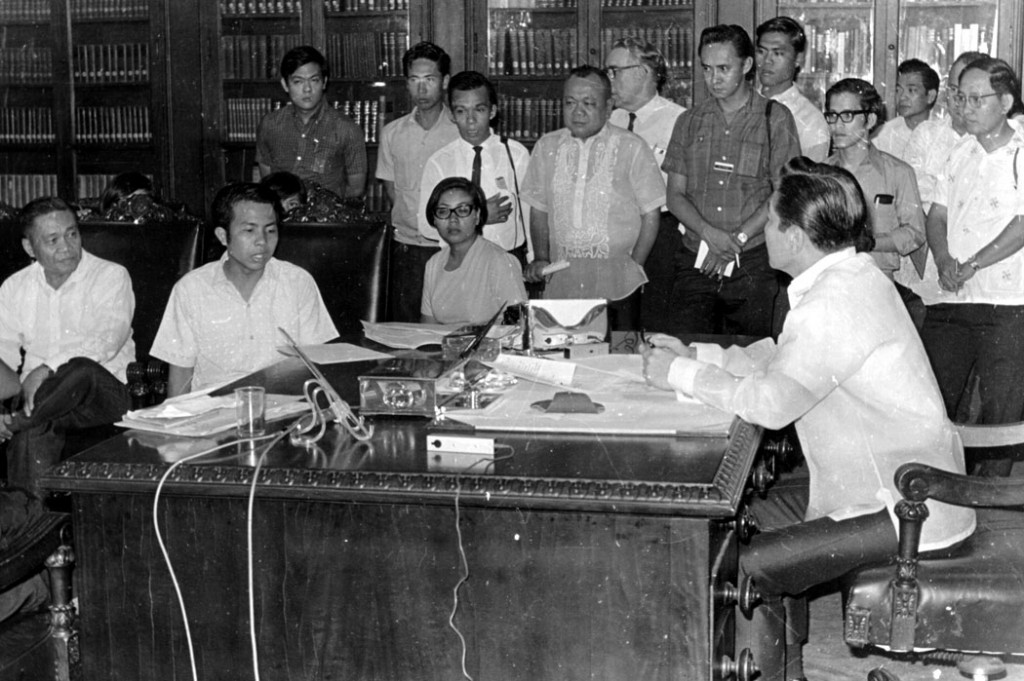Atenista who exposed the Marcos torture machine
Edgar Jopson, a hero in the fight against the Marcos dictatorship, is being honored posthumously as an outstanding alumnus by Ateneo’s management engineering alumni.
INQUIRER.net Columnist Oscar Franklin Tan wrote of the significance of the award to Edjop, as Jopson is also known, in the wake of criticism that Ateneo has not done enough to explain the horrors of the Marcos era to its students.
As we observe International Human Rights Day, Ateneo could actually take pride in one of the accomplishments of its famous alumnus: Edjop helped expose the Marcos torture machine.
Oscar eloquently traced Jopson’s incredible journey in his column, but let me offer a quick recap.
Edjop is remembered as the Ateneo student leader who in 1970 dared ask Marcos to put in writing his promise not to seek a third term as president. Marcos responded by angrily calling Edjop a mere grocer’s son. Known as a moderate, Edjop stunned the nation by joining the underground movement after Marcos declared martial law in 1972.
Article continues after this advertisementA graduate of one of the most prestigious universities in the country, with a degree in the toughest college program at the Ateneo, Edjop was poised to build a promising and prosperous career in business or politics. Instead, he used what he learned in Ateneo’s management engineering program to help workers from Manila’s urban poor communities organize and fight back.
Article continues after this advertisementIt was a dangerous life.
In 1979, Edjop was captured by the Marcos security forces. At the notorious Camp Crame, Edjop suffered the fate of other opponents of dictatorship: He was tortured and abused.
But for the dictatorship, Edjop turned out to be a dangerous kind of political prisoner. He did not stop fighting back and, in a way, his Ateneo training again became a weapon.
Edjop, the political prisoner, took detailed mental notes of everything he saw and experienced, including the names and character traits of his captors, including the officers who abused him and his comrades.
He later reported his observations in a document titled “Open Letter to the Filipino People,” which came out after he escaped from prison. It became an important document in the campaign for human rights in the Philippines during the Marcos era.
Edjop offered a detailed portrait of the Marcos torture machine, giving human rights investigators and advocates a closer look at the way the regime systematically abused political detainees and opponents.
“Many of the officers I met come from dubious backgrounds and engage in nefarious activities,” he wrote. “One agent confessed that he was a killer for hire. …Another agent was a mental patient in Ward 24 when he was recruited into the intelligence service by a town mate. Several agents offered to set me free or help me for a five to six-figure fee. … Another agent admitted he engages in hold-ups and robberies. Most confessed that ‘salvaging’ — the military term for summary execution — “is part of their tradecraft.”
Edjop described the operations of safe houses used by Marcos’ torturers: “Safe houses usually have their windows always shut tight. They are usually covered with high walls. One would usually detect [safe houses] through the traffic of motorcycles and cars, going in and out of the house at irregular hours. Burly men, armed with pistols tucked in their waists or in clutch bags, usually drive these vehicles.”
A highlight of the report was the chilling portrait of Rodolfo Aguinaldo, accused of being one of the most brutal intelligence officers during the Marcos era and who was known for using sadistic psy-war tactics.
“Aguinaldo loves intrigues,” Edjop wrote. “He enjoys courting and seducing the wives and sisters of political detainees. He relishes the ensuing misunderstanding between husband and wife and among siblings. In interrogation sessions, he loves to pry into the marital problems of detainees and activists, or the love [problems] of single female activists and detainees — all for the purpose of sowing intrigue in the movement … Aguinaldo usually offers an early release from detention to the wives of detainees, whom he uses as some sort of hostage. If and when an ex-detainee decides to rejoin the movement, Aguinaldo would threaten to harm the wife and relatives of the ex-detainee.”
His portrait of Aguinaldo was based on Edjop’s own encounter with the notorious officer. For in dealing with the former Ateneo student leader, Aguinaldo committed a major blunder.
Aguinaldo apparently viewed Edjop as a soft, burgis Atenista who would easily crack under pressure. He thought psy-war tactics could turn Edjop into an important intelligence asset and had planned to have him rejoin the underground movement as military spy.
Edjop played along, but later pounced at a chance to escape. The Atenista Marcos once insulted and dismissed as a mere grocer’s son outsmarted the tyrant’s torturers.
Anvil has just released the e-book version of my book on Edjop, U.G. An Underground Tale. Royalties will be donated to Bantayog ng Mga Bayani, which honors those who fought against the Marcos regime. For more information, check Anvil’s website: https://www.anvilpublishing.com/shop/u-g-an-underground-tale/
Visit the Kuwento page on Facebook at www.facebook.com/boyingpimentel
On Twitter @boyingpimentel
RELATED STORY
